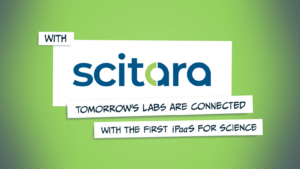In the fast-paced world of scientific research, development and manufacturing, time is of the essence. Laboratories are constantly seeking ways to streamline their processes and expedite project completion times. One transformative solution gaining momentum in lab digital transformation is lab data integration and automation platforms. This blog on financial benefits is part of a five-part series that also looks at the people benefits, department benefits, organizational benefits and customer benefits of implementing these platforms.
FINANCIal Benefits
In the dynamic landscape of scientific research, development and manufacturing, laboratories are constantly seeking ways to optimize their operations not only for scientific excellence but also for financial efficiency. The adoption of lab data integration platforms emerges as a strategic move with far-reaching financial benefits. These platforms contribute to increased revenue, decreased costs, improved asset utilization, and enhanced working capital efficiency, making them a valuable investment for laboratories looking to maximize returns.
- Increased Revenue through Accelerated Time-to-Market: Time is a critical factor in the research and development lifecycle. Lab data integration platforms play a pivotal role in accelerating time-to-market for new products, technologies, or innovations. By streamlining data processes, researchers can expedite experiments, analyses, and project timelines. The faster introduction of new products or advancements translates to quicker monetization and revenue generation, providing a competitive edge in the market.
- Decreased Costs through Operational Efficiency: Operational efficiency is synonymous with cost savings. Lab data integration platforms optimize workflows, reduce manual errors, and minimize the need for rework. This operational streamlining leads to a direct reduction in operational costs associated with labor, materials, and resources. Additionally, the automation of data management processes decreases the likelihood of costly errors, regulatory fines, and delays, further contributing to significant cost savings for the laboratory.
- Improved Asset Utilization: Laboratory equipment and resources represent substantial investments for organizations. Lab data integration platforms enhance asset utilization by ensuring that equipment is efficiently used and maintained. Automated data collection and analysis reduces downtime, enhances the lifespan of instruments, and enables more effective scheduling of equipment usage. Improved asset utilization not only maximizes the return on investment but also minimizes the need for costly equipment repairs or replacements.
- Enhanced Working Capital Efficiency: Effective data integration contributes to better working capital efficiency by streamlining procurement and inventory management processes. Laboratories can optimize their supply chain, reduce excess inventory, and negotiate better terms with suppliers. The ability to make informed decisions based on integrated data ensures that working capital is allocated judiciously, minimizing tied-up capital, and improving overall financial flexibility.
Lab data integration platforms are not just tools for scientific advancement; they are strategic assets with profound financial implications. From increased revenue through accelerated time-to-market to decreased costs, improved asset utilization, and enhanced working capital efficiency, these platforms offer a multifaceted approach to financial optimization. Laboratories embracing data integration not only position themselves for scientific success but also set the stage for sustainable financial growth and competitiveness in the ever-evolving landscape of scientific research.
